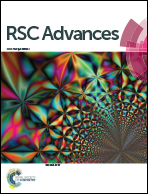Continuous and direct ‘in situ’ reaction monitoring of chemical reactions via dielectric property measurement: controlled polymerisation†
Abstract
This paper demonstrates that direct, “in situ” measurement of a reaction mixture using a coaxial probe technique can be used to accurately follow the progress of a chemical reaction. Such a system was shown to clearly indicate the presence/onset of and define the magnitude of key reaction parameters such as induction periods and end-points over a broad range of temperatures and viscosities. Thus it allowed the reaction to be conducted for the ideal time period, so maximising reactor through-put, energy efficiency and end product quality. Furthermore, by relating these ‘in situ’ measurements to a pre-prepared calibration curve, key experimentally achieved reaction rates could be determined. Finally, these continuously acquired, non-intrusive ‘in situ’ measurements were validated by comparison to conventional and industry accepted off-line measurement techniques.


 Please wait while we load your content...
Please wait while we load your content...